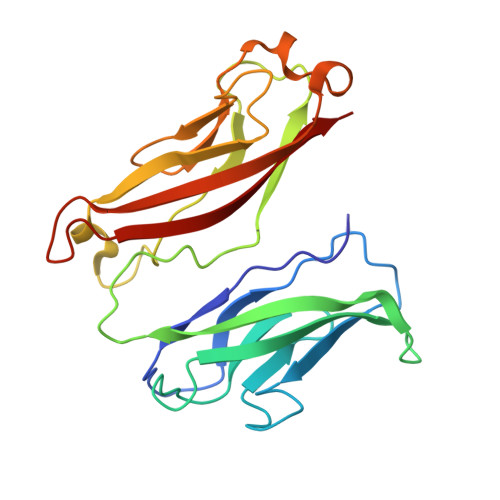T-cadherin structures reveal a novel adhesive binding mechanism
Ciatto, C., Bahna, F., Zampieri, N., Vansteenhouse, H.C., Katsamba, P.S., Ahlsen, G., Harrison, O.J., Brasch, J., Jin, X., Posy, S., Vendome, J., Ranscht, B., Jessell, T.M., Honig, B., Shapiro, L.(2010) Nat Struct Mol Biol 17: 339-347
- PubMed: 20190755
- DOI: https://doi.org/10.1038/nsmb.1781
- Primary Citation of Related Structures:
3K5R, 3K5S, 3K6D, 3K6F, 3K6I - PubMed Abstract:
Vertebrate genomes encode 19 classical cadherins and about 100 nonclassical cadherins. Adhesion by classical cadherins depends on binding interactions in their N-terminal EC1 domains, which swap N-terminal beta-strands between partner molecules from apposing cells. However, strand-swapping sequence signatures are absent from nonclassical cadherins, raising the question of how these proteins function in adhesion. Here, we show that T-cadherin, a glycosylphosphatidylinositol (GPI)-anchored cadherin, forms dimers through an alternative nonswapped interface near the EC1-EC2 calcium-binding sites. Mutations within this interface ablate the adhesive capacity of T-cadherin. These nonadhesive T-cadherin mutants also lose the ability to regulate neurite outgrowth from T-cadherin-expressing neurons. Our findings reveal the likely molecular architecture of the T-cadherin homophilic interface and its requirement for axon outgrowth regulation. The adhesive binding mode used by T-cadherin may also be used by other nonclassical cadherins.
- Department of Biochemistry and Molecular Biophysics, Columbia University, New York, New York, USA.
Organizational Affiliation:
















